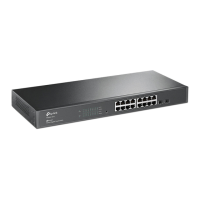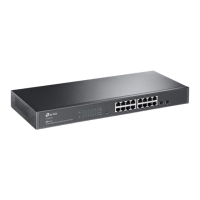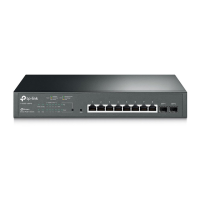156
10.3 Static Routing
Static routes are special routes manually configured by the administrator and cannot change
automatically with the network topology accordingly. Hence, static routes are commonly used in a
relative simple and stable network. Proper configuration of static routes can greatly improve
network performance.
Choose the menu Routing→Static Routing→Static Routing Config to load the following page.
Figure 10-3 Static Routing Config
The following entries are displayed on this screen:
Static Route Table
Interface name: Displays the description of the egress interface.
Destination:
Specify the destination IP address of the packets.
Subnet Mask: Specify the subnet mask of the destination IP address.
Next Hop: Enter the IP address to which the packet should be sent next.
Distance:
Enter the distance metric of route. The smaller the distance is,
the higher the priority is.
Select: Specify the static route entries to modify.
Destination
Address:
Displays the destination IP address of the packets.
Subnet Mask: Displays the subnet mask of the destination IP address.
Next Hop: Displays the IP address to which the packet should be sent next.
Distance: Displays the distance metric of rou
te. The smaller the distance is,
the higher the priority is.
Metric: Displays the metric of the route.
Interface Name: Displays the name of the VLAN interface.

